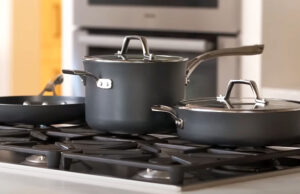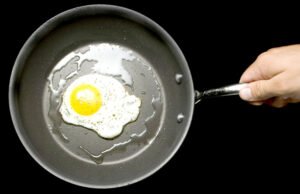As an Amazon Associate, I earn from qualifying purchases at no extra cost to you.
Kenmore Dishwasher Diagnostic Codes: Expert Guide to Fix It
Have you ever turned on your Kenmore dishwasher and seen strange codes blinking? It can feel confusing and frustrating. In this article, we will explain the most common Kenmore dishwasher diagnostic codes and show you exactly what they mean. You will learn how to read them, understand the problem, and fix it faster without stress.
Understanding Kenmore Dishwasher Error Codes
Kenmore dishwashers use digital codes to tell you when something is wrong. These codes can blink on the display or the lights may flash in a specific pattern. Each code means a different problem. It could be a water supply issue, a drain problem, or a temperature error. Knowing these codes helps you fix problems quickly and avoid bigger damage.
For example, an F1 error usually means a water inlet problem. If the dishwasher shows F2, it could be a temperature sensor problem. You do not need to guess. Reading the code correctly saves time and prevents frustration. Always check the manual if you are unsure, because it lists each code clearly.
When you see an error, don’t panic. Take a deep breath and write down the code. Then, check the basics first. Make sure the dishwasher has water, the door is closed, and filters are clean. Often, simple checks solve the problem without calling a repair service.
Using codes helps you understand the machine better. It is like the dishwasher is talking to you. Once you know the meaning, you can make decisions calmly. The codes are guides, not warnings to stress out.
- F1: Water inlet problem
- F2: Temperature sensor issue
- F3: Drain problem
- F4: Water leak detected
- F5: Motor issue
Checking Water Supply and Inlet Problems
One of the most common issues shown by Kenmore codes is water supply or inlet problems. If your dishwasher shows F1 or F9, it usually means water is not coming in properly. First, check if the water valve is turned on. Sometimes it is accidentally off, and that stops water from flowing.
Next, inspect the water hose. Make sure it is not kinked, bent, or clogged. Even small blockages can prevent the dishwasher from filling. You can remove the hose and flush it with water to see if anything is stuck inside. Clean it gently to avoid damage.
The filter at the water inlet can also get dirty. It blocks debris from entering the dishwasher. Over time, food particles or minerals can clog it. Remove the filter carefully, rinse it, and reinstall it. This often solves F1 or F9 problems quickly.
If water still does not come in, check the float switch inside the dishwasher. It controls water levels. Make sure it moves freely and is not stuck. Sometimes the float can get jammed with debris. After cleaning, run a test cycle.
- Turn on water valve
- Check hose for kinks or blockages
- Clean water inlet filter
- Inspect float switch
Diagnosing Temperature Sensor Errors
Kenmore dishwashers sometimes show codes like F2 or F6, which are related to temperature problems. These sensors check water heat and prevent damage. If the sensor is faulty, your dishwasher might not wash dishes properly. First, check the water heater. Make sure it works and heats water correctly.
Next, look at the wiring to the sensor. Loose connections can trigger errors. Carefully disconnect and reconnect the wires, making sure they are secure. Sometimes just a small adjustment fixes the issue. Always turn off power before touching wires. Safety first!
If the sensor seems damaged, it may need replacement. Sensors are small and easy to replace. Check the model number and buy the correct part. After installation, run the dishwasher and monitor the temperature. The error should disappear if the sensor is now working properly.
Also, make sure the dishwasher is not overloaded. Too many dishes can block water flow and make sensors read wrong temperatures. Lightly load dishes to let water circulate. This small change can prevent errors in the future.
- Check water heater function
- Inspect sensor wiring
- Replace damaged sensor
- Avoid overloading dishwasher
Solving Drain and Pump Issues
F3 and F7 errors often relate to the drain system or pump. If water is not draining, the dishwasher cannot finish cycles. First, check the drain hose. Make sure it is not kinked or blocked. Detach it and run water through to clear any debris.
The dishwasher filter and sump can also clog. Food particles collect here and prevent proper draining. Remove the filter, clean it, and inspect the sump area. This often resolves most draining problems. Be gentle to avoid damage.
The drain pump itself may fail over time. You can test it by listening during the cycle. If it makes strange noises or does not run, it might need cleaning or replacement. Always turn off power before handling the pump. Replacing a pump is easier than you think and often fixes the issue completely.
Sometimes, the issue is with the garbage disposal connection. If your dishwasher drains into the disposal, make sure the knockout plug is removed and there are no blockages. Proper installation is key to smooth draining.
- Inspect drain hose for blockages
- Clean dishwasher filter and sump
- Test or replace drain pump
- Check garbage disposal connection
Detecting Water Leaks and Overflow
Kenmore dishwashers can detect leaks using special sensors. F4 or F8 codes usually signal a leak or water overflow. Start by checking for visible water under or around the dishwasher. Even a small puddle matters. It can damage your floor and cabinet.
Next, check the door gasket. Over time, gaskets wear out or crack. If water leaks from the door, replace the gasket. It is an easy fix that prevents big problems. Also, inspect the bottom of the dishwasher for cracks or holes. Leaks here can trigger the sensors.
Make sure the dishwasher is level. If it tilts forward or backward, water may spill and trigger an error code. Adjust the legs until the machine is stable. Sometimes, just leveling the dishwasher stops false leak warnings.
Finally, check hoses for loose connections or small leaks. Tighten clamps and make sure hoses are in good condition. Regular inspection can prevent many water-related issues and keep your dishwasher running safely.
- Look for visible leaks
- Inspect and replace door gasket
- Ensure dishwasher is level
- Check hoses and connections
Fixing Motor and Electrical Problems
Motor issues are common in Kenmore dishwashers, often shown as F5 or F9 codes. If the motor does not run, the dishwasher cannot wash or drain. Start by checking for obstructions. Small objects like utensils can block the motor or pump impeller. Remove any obstacles carefully.
Next, inspect the wiring and connections to the motor. Loose or damaged wires can cause errors. Make sure the motor is connected properly and securely. Turn off the power before handling any wires to avoid shocks.
If the motor is worn out, replacement may be necessary. Motors have a limited lifespan and sometimes fail after years of use. Make sure to buy the correct motor for your model. Installing it usually fixes persistent error codes.
Finally, check the control board. Sometimes a simple reset clears the code. Unplug the dishwasher for a few minutes, then plug it back in. If the motor and board are fine, the dishwasher should run without errors.
- Remove obstructions from motor
- Inspect wiring connections
- Replace worn motor if needed
- Reset control board
Maintaining Your Kenmore Dishwasher
Regular maintenance can prevent most error codes. Clean filters and spray arms monthly to avoid clogs. Wipe the door and gasket to prevent leaks. Check hoses for kinks or wear. These simple steps keep your dishwasher running smoothly.
Run an empty cycle with vinegar once in a while. It removes buildup and keeps the machine fresh. Avoid overloading dishes, as this blocks water flow and affects performance. Inspect the float and sensors periodically to catch issues early.
Check the water supply and temperature regularly. Softened water helps prevent mineral buildup. Use recommended detergents and rinse aids. Following these tips reduces errors and extends the life of your dishwasher.
- Clean filters and spray arms
- Wipe door and gasket
- Run vinegar cycle occasionally
- Inspect float, hoses, and sensors
Final Thoughts
Kenmore dishwasher diagnostic codes can be confusing at first. But learning them saves time, stress, and repair costs. By checking water supply, sensors, drains, leaks, and motors, most problems are easy to fix. Regular maintenance keeps your dishwasher running smoothly. Knowing these codes makes you confident and ready for any issue.
| Code | Problem | Common Fix |
|---|---|---|
| F1 | Water inlet | Check valve, hose, filter |
| F2 | Temp sensor | Inspect wiring, replace sensor |
| F3 | Drain | Clear hose, pump, filter |
| F4 | Leak | Check gasket, level dishwasher |
| F5 | Motor | Remove obstruction, replace motor |
| F8 | Overflow | Inspect hoses, check door |
Frequently Asked Questions (FAQs)
Is it normal for Kenmore dishwashers to show error codes?
Yes, it is normal. Error codes are designed to alert you about problems. They do not mean the dishwasher is broken beyond repair. Most codes point to simple issues like blocked hoses, a stuck float, or dirty filters. Checking the code and following basic troubleshooting steps usually fixes the problem. Treat them as helpful messages.
Can I fix F1 water inlet errors myself?
Yes, you can often fix F1 errors on your own. Check the water valve, hose, and inlet filter first. Make sure the valve is open and water flows freely. Cleaning or replacing the filter usually solves the problem. If the issue continues, check the float switch. Most F1 problems are simple and do not need a professional.
Do I need a technician for temperature sensor issues?
Sometimes, yes. Minor issues like loose wiring can be fixed at home. However, if the sensor is damaged, replacement may be needed. You can buy the correct sensor and follow instructions carefully. Always turn off power before working on sensors. Many people successfully replace sensors without calling a technician.
Is it safe to run the dishwasher with a motor error?
No, it is not safe. Running the dishwasher with a motor problem can cause further damage. Stop using it until you inspect the motor and remove any blockages. If the motor is worn out, replace it. Addressing motor errors quickly keeps the dishwasher safe and prevents costly repairs.
Can clogged filters cause drain problems?
Yes, clogged filters are a common cause of drain issues. Food particles and debris block water flow, triggering F3 errors. Cleaning the filter regularly prevents these problems. Check the sump area too. Simple cleaning usually restores proper draining.
Do I need to replace a door gasket for leaks?
Yes, if the gasket is cracked or worn, it should be replaced. A bad gasket can cause water to leak, triggering F4 errors. Replacement is easy and prevents floor damage. Inspect it regularly as part of maintenance.
Is overloading dishes harmful to the dishwasher?
Yes, overloading blocks water flow and spray arms. This can cause temperature, sensor, or drain errors. Load dishes lightly and place items correctly. Proper loading improves cleaning and prevents error codes.
Can vinegar help maintain my Kenmore dishwasher?
Yes, running an empty cycle with vinegar removes mineral buildup and keeps the dishwasher fresh. It is a simple, safe maintenance step. Doing this monthly helps prevent clogs, keeps sensors accurate, and reduces errors over time.




